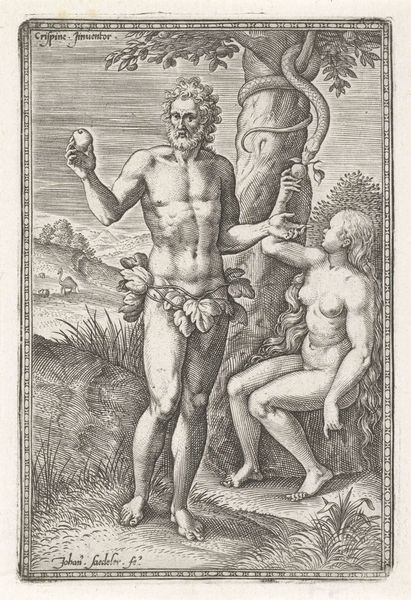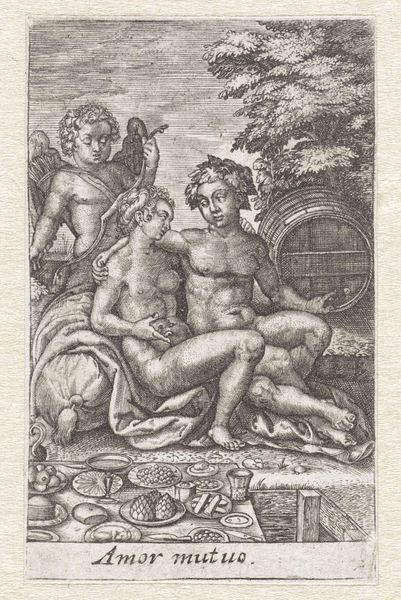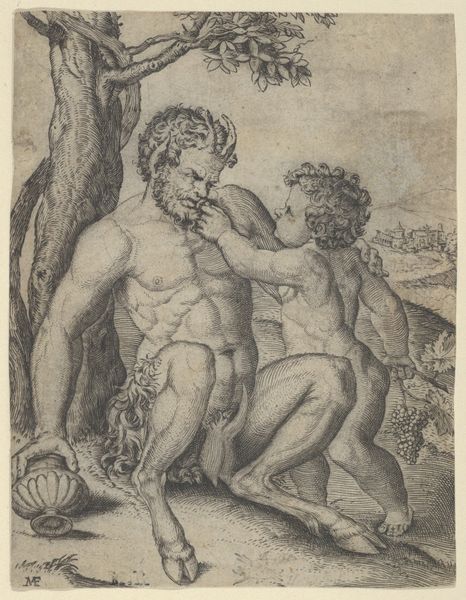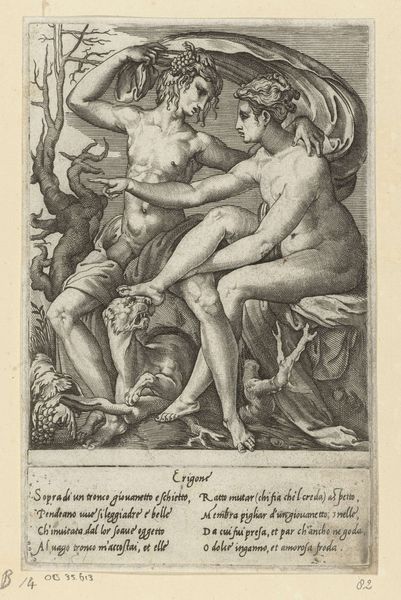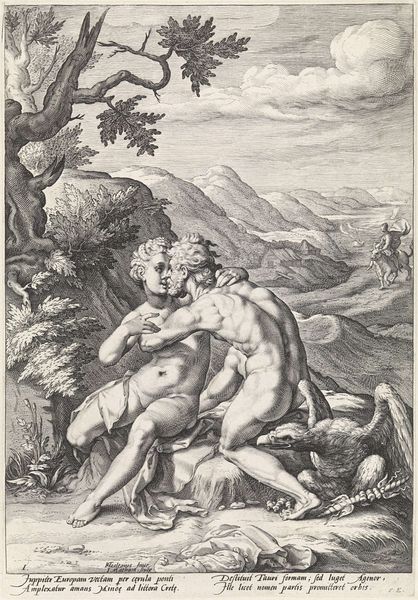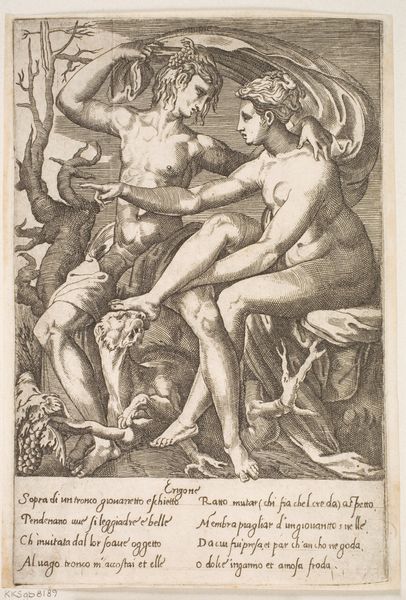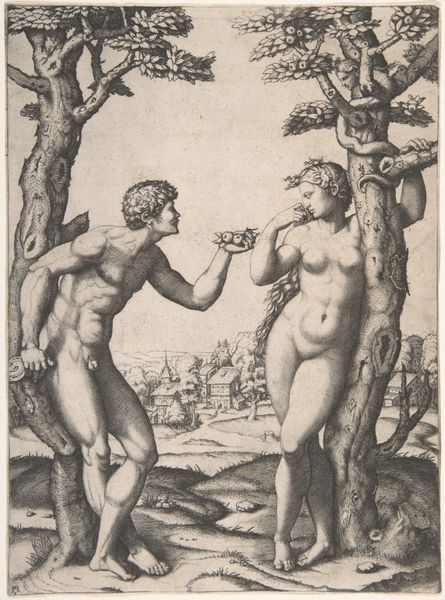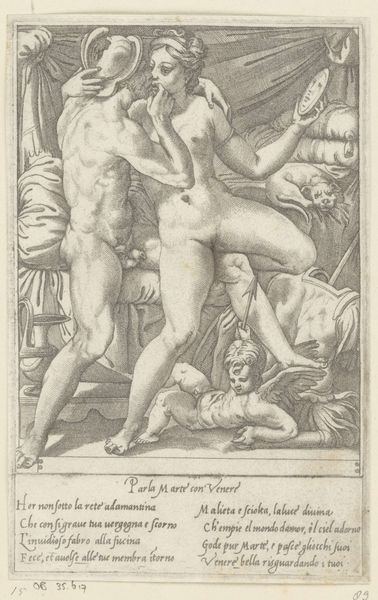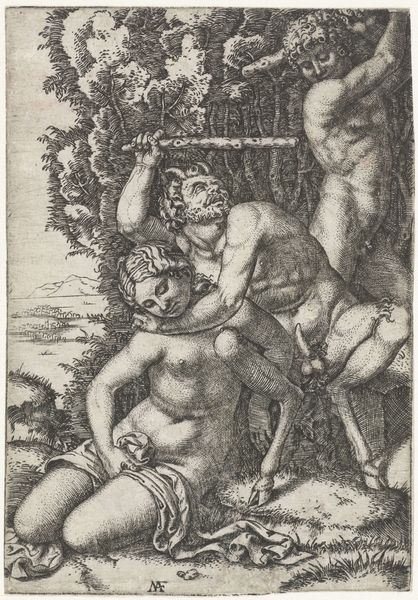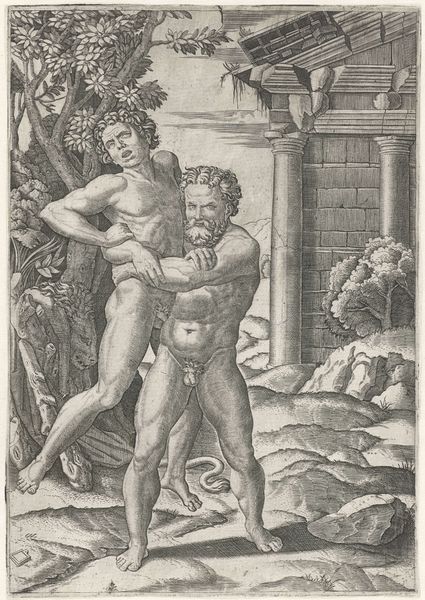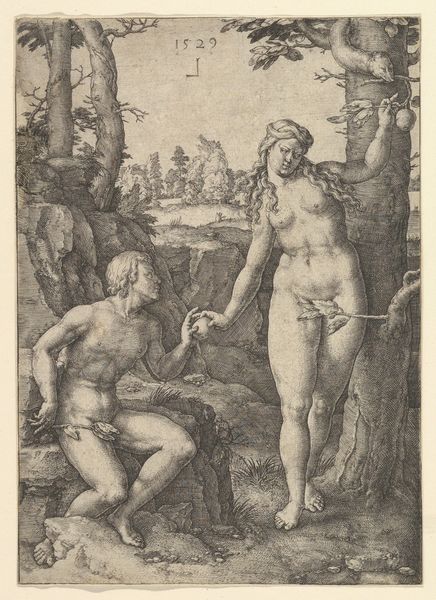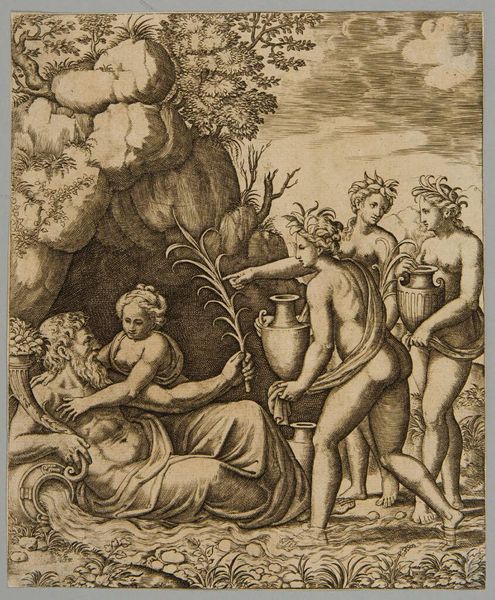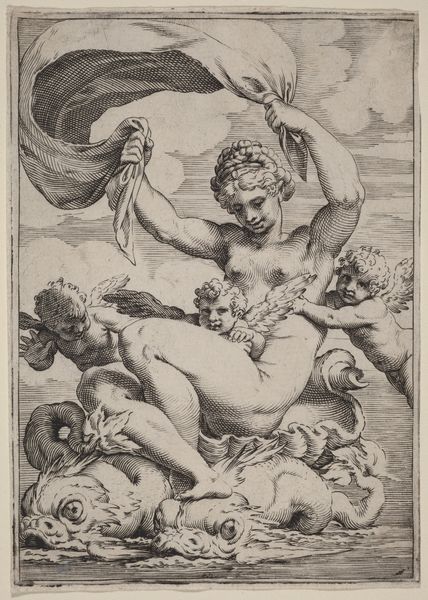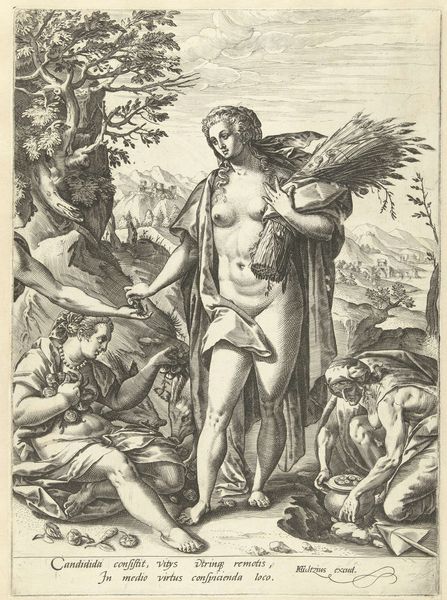
engraving
#
allegory
#
baroque
#
figuration
#
line
#
history-painting
#
nude
#
engraving
#
erotic-art
Dimensions: height 79 mm, width 51 mm
Copyright: Rijks Museum: Open Domain
This engraving, "Triumph of Virtue over Lust," was created around 1600 by Wierix, and you can find it here at the Rijksmuseum. The composition immediately presents a stark contrast between the figures representing virtue and lust. Notice the satyr, a symbol of untamed desire, being driven away by Cupid, who embodies virtuous love. The reclining figure seems caught between these opposing forces, a dynamic tension that structures the scene. Wierix employs line and form to set up a visual semiotic system: the rough, diagonal lines suggesting the satyr's hasty retreat versus the smoother, curved lines delineating the idealized human form. This contrast highlights the philosophical discourse of the time, which was marked by the struggle between reason and passion, and the triumph of Christian morality over earthly desire. Consider how the material qualities of the engraving—the fineness of the lines, the contrasts of light and shadow—emphasize this didactic message. This artwork, therefore, functions not just as an aesthetic object but as a potent emblem of cultural values.
Comments
No comments
Be the first to comment and join the conversation on the ultimate creative platform.
